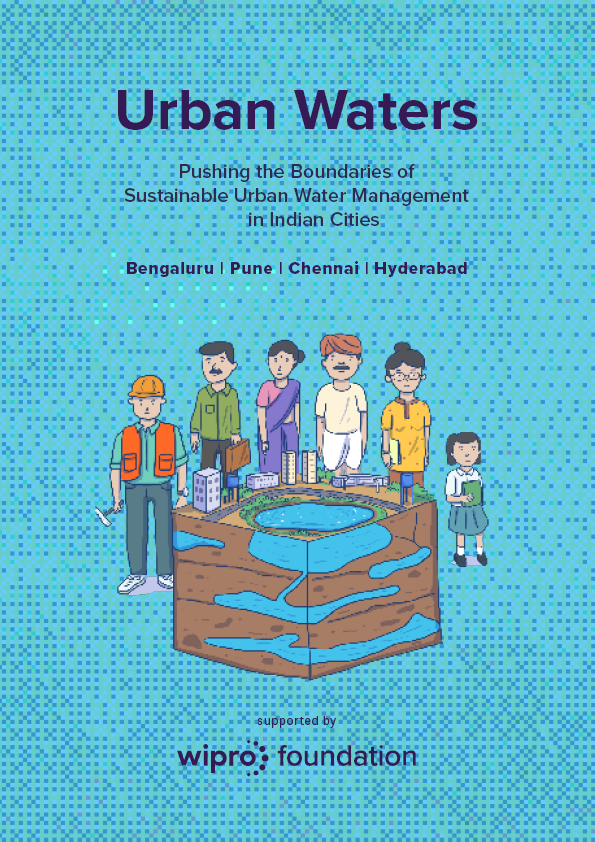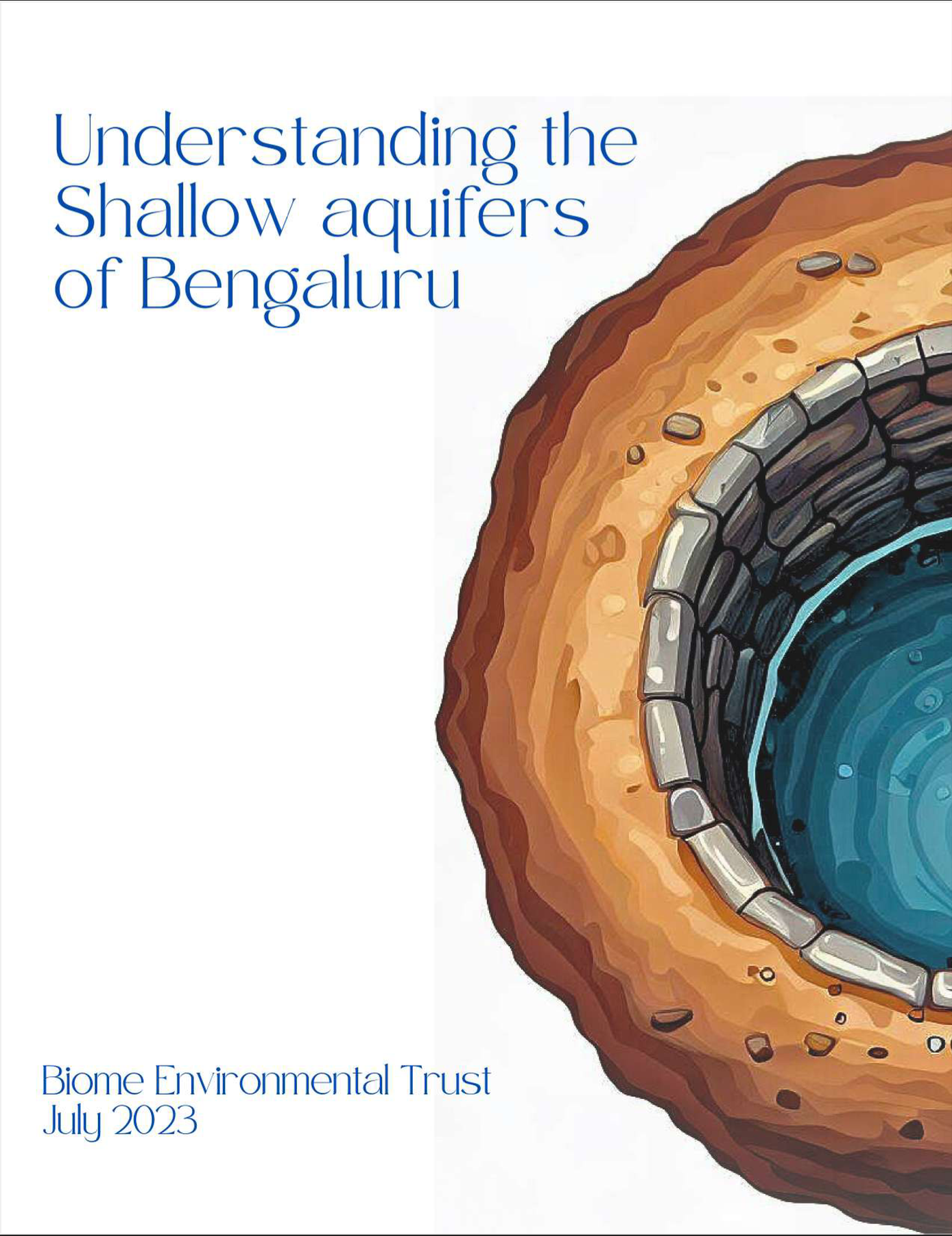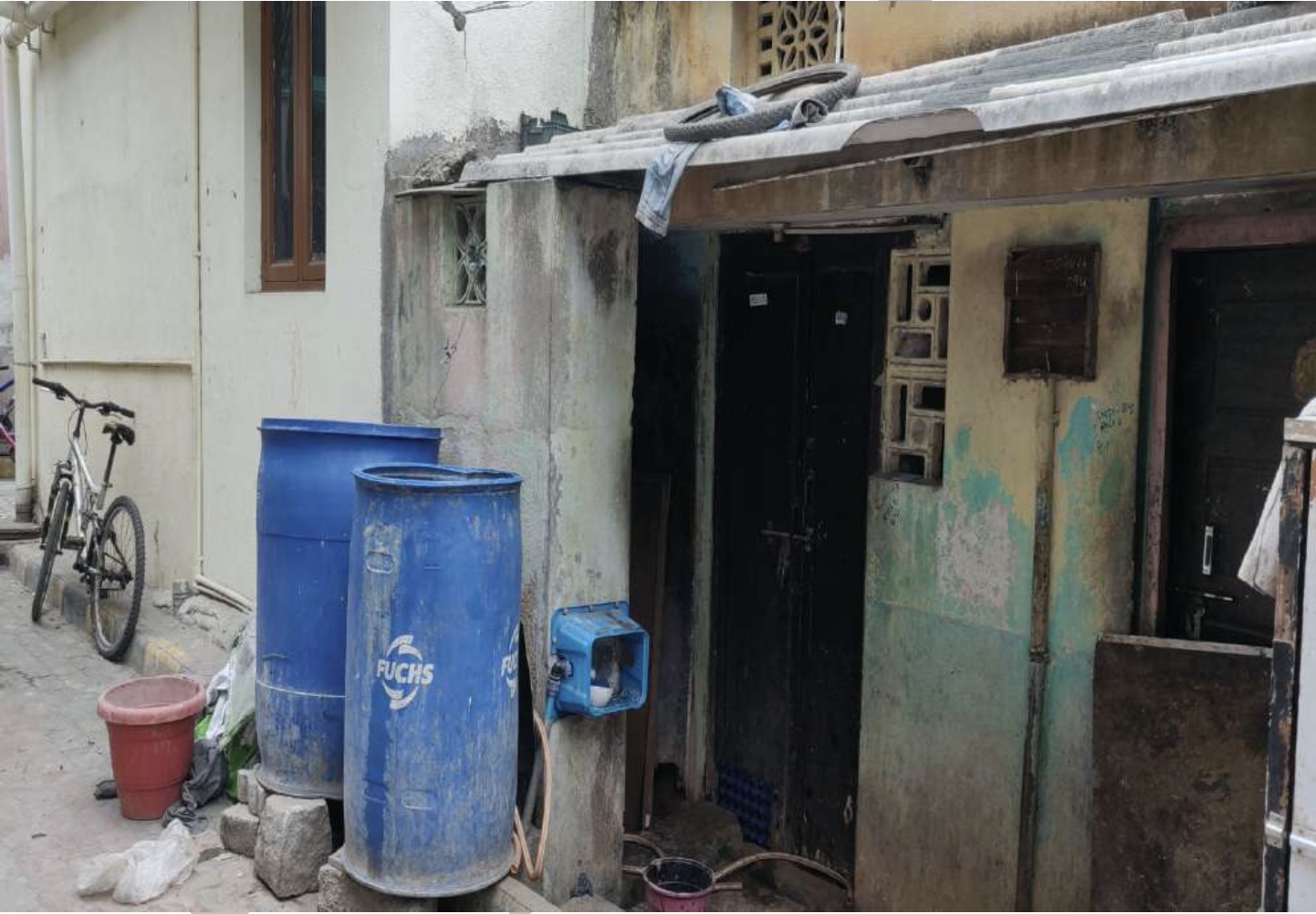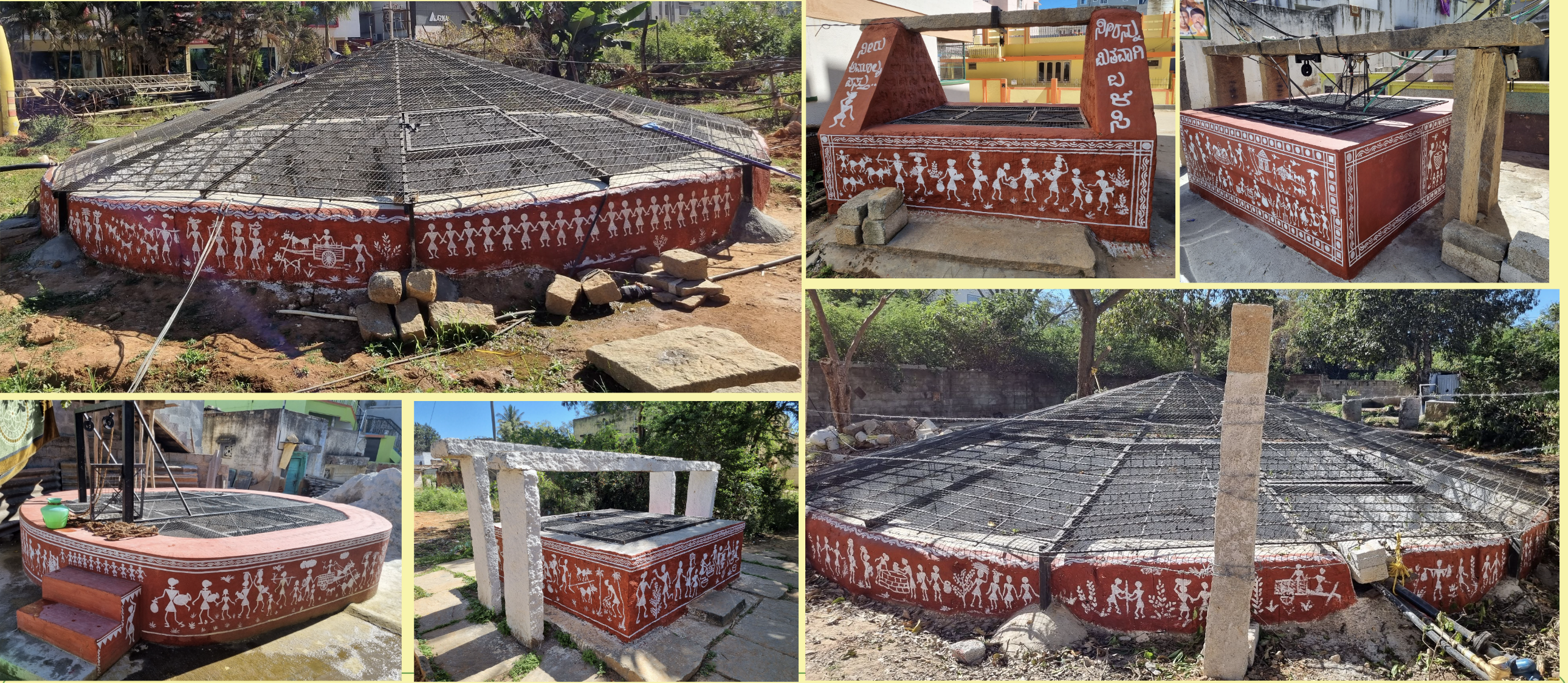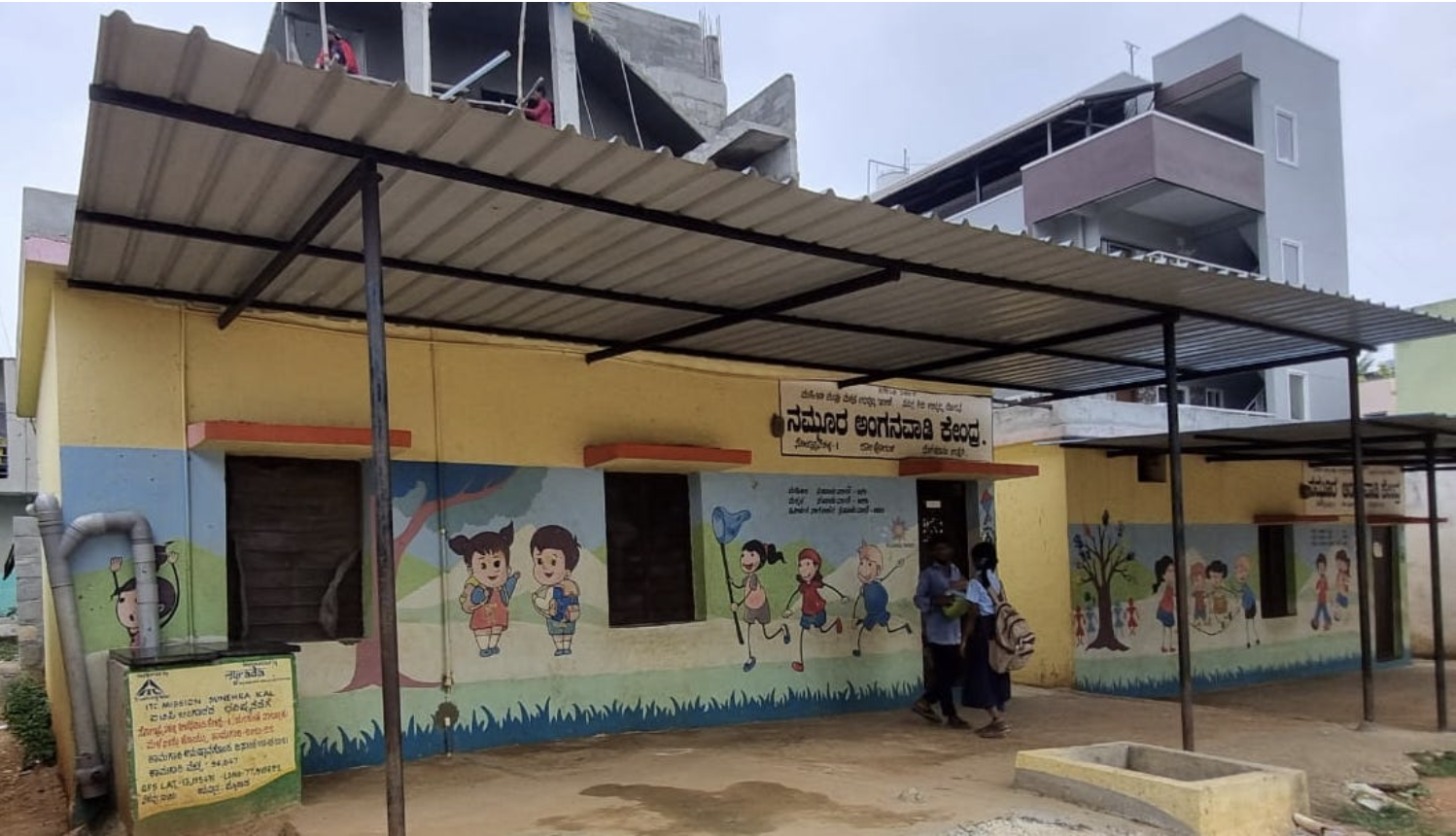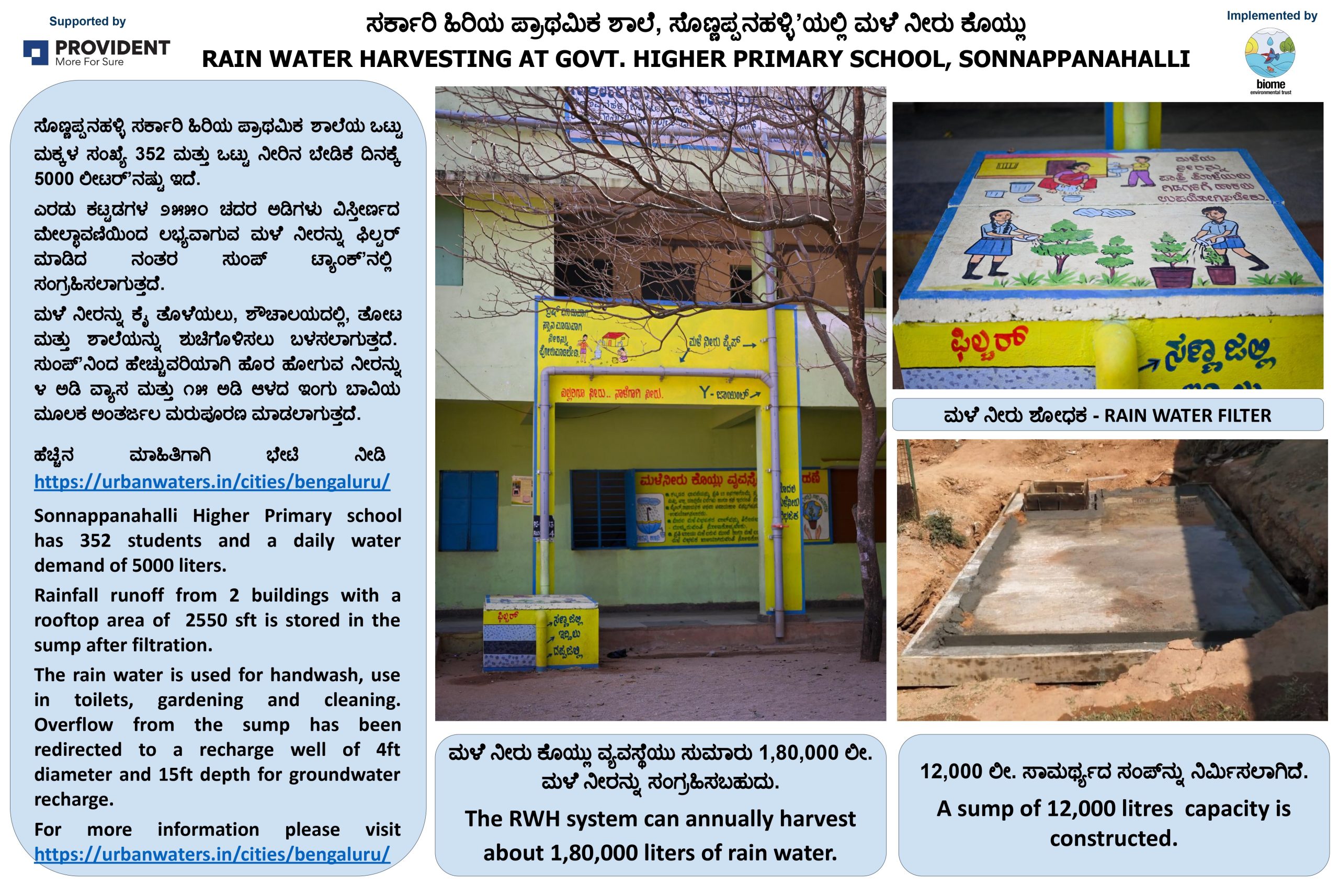Recharge wells help recharge borewell on a farm
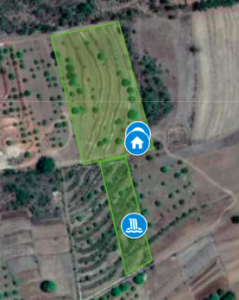
Mr Sanjeev Patil’s Sanyam Permaculture Farm is set on two plots of farmland adjacent to each other in Halligeri Village, Dharwad. Both plots are principally mango orchards. The smaller plot is of 1 acre with a farm pond towards the southeastern part, and the larger plot is of around 3 acres situated to its north.
Mr Sanjeev Patil approached Biome for help to recharge the borewell on the larger plot. It is 360 ft deep, and had water at around 200 ft when Mr Patil removed the submersible pump that the previous owner had left in it.
Aside from the mango trees, both the plots have been planted with other edible fruit trees and biomass rich trees. Mr Patil also grows vegetables, paddy, sugarcane, pulses and millets during the monsoon. Earthworks have been carried out on the land (the swales can be seen in the figure). The entire farm was rainfed – no irrigation was carried out.
Based on Biome’s recommendations, Mr Patil got 3 recharge wells dug on the farm in December 2018. They were 4 ft in diameter and 20 ft in depth, and could recharge upto 30 KL per rain. Two recharge wells were dug near the borewell, and the third in one of the swales. Mr Patil also installed a handpump on the borewell, as he did not wish to use an electrical pump that would pump out a lot of water. The borewell water was to be used only for domestic purposes, not for irrigation.
After the recharge wells were dug, it was noticed that the water level in the borewell went up to 70-80 ft during the monsoon season. The recharge wells generally run dry by mid-May, but get recharged with just one rain in the monsoon.
Mr Patil started to build a mud house on the farm in 2019. He had thought that he would be entirely dependent on borewell water for construction, but found that his recharge wells were able to provide a lot of water as well.
Here’s what he emailed Biome in August 2020:
‘The recharge wells are doing very well. They are full of water during monsoons. They helped in recharging our tubewell very well. This year we could use the tubewell water up to mid May between 70 ft to 110 ft level. We had about 6 ft water in all the 3 recharge wells in May. We have been able to use this water to make a small nursery and also for construction work.’
Biome has also recommended that Mr Patil harvest the rooftop rainwater from his house, store it in a sump and use it for all uses in the house.






